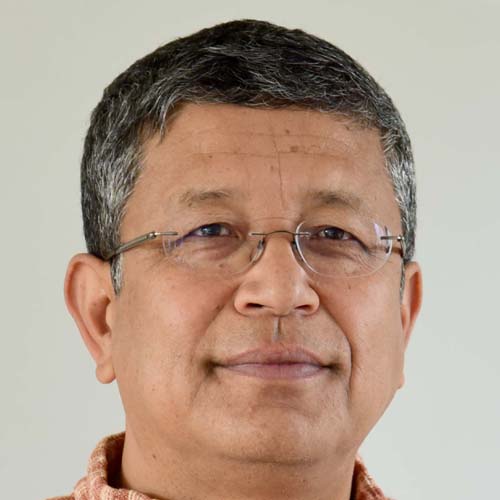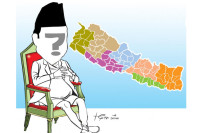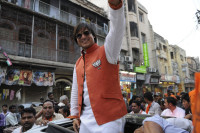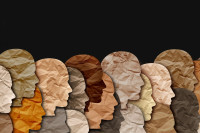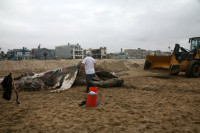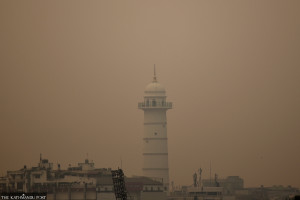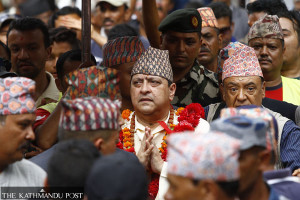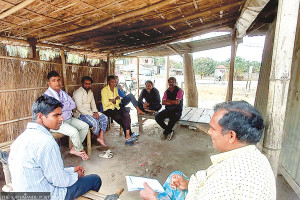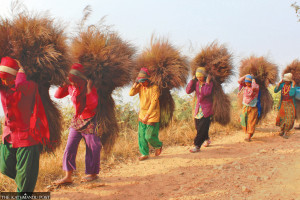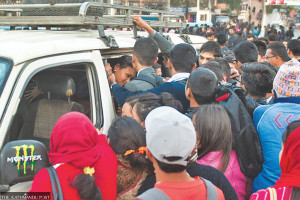 29.12°C Kathmandu
29.12°C KathmanduOpinion
Who are we?
If we can all rejoice in the richness of our collective cultural heritage, we will all be the better for it
Deepak Thapa
Some years ago, I had the occasion to visit the Chief District Officer (CDO) of Nuwakot in his office in Bidur. As part of the introductions, I handed him my business card and waited for the inevitable question. This is because I work for the organisation called Social Science Baha and am invariably asked what ‘baha’ stands for. As is often the case, after first disavowing any links with the Bahai religion, I went through the ritualistic answer I have perfected over the years: that ‘baha’ is the adaptation by the Newar of Kathmandu Valley of the Sanskrit word for monastery, ‘vihara’; that it has been corrupted by Nepali-speakers into ‘bahal’ such as Om Bahal or Gana Bahal (which people in general can relate to immediately); that bahas were the only centres of learning in mediaeval Nepal; and that as an organisation based in Kathmandu and devoted to the exchange of ideas through various means, we had rather grandiosely appropriated the term. After hearing me out, the CDO responded with, ‘But, you are not a Newar?’
That existential question missed the whole point of my long-winded explanation, but it also provided an insight into the mindset that has yet to come to terms with the country’s wondrous social diversity. In the last decade or so with the rise of the politics of ethnicity in Nepal, there has been a strong push re-emphasising the hoary but attractive slogan, ‘unity in diversity’, but for people like the Nuwakot CDO, true celebration of that diversity is quite an alien concept. Otherwise, he would have found it quite natural for a Kathmandu organisation to have a name rooted in the Valley’s rich socio-cultural history, regardless of the social background of those associated with it.
To be fair on the CDO, like me, he is a product of the Panchayat years when formally we were all Nepalis, speaking the same language, wearing the same dress, and mostly following the same religion. Any hint of a show or practice of differences was frowned upon and strongly discouraged. Hence, acceptance of alternative conceptions of what it means to be a Nepali does not come easily to people of that generation despite the quarter century of freedom that has allowed any and everyone to proudly display their own particular sub-national identities. But, if instead of perceiving these articulations as attempts to rupture a rather tenuous national fabric, we can all rejoice in the richness of our collective cultural heritage, we will all be the better for it. It is all the more important since identities are still in the process of being formed, discussed, recognised, and sometimes disputed.
Social diversity
After all, it was only with the 1991 census that we came to learn about the number of the various caste and ethnic groups living in the country. Although some scholars have said that similar data was collected by the Panchayat regime, since it was not published, we know nothing about the kind of information that existed then. What we do know is that in 1991, the census recorded 30 caste and 26 ethnic groups. By 2001, that number had gone up to 51 caste and 45 ethnic groups, and in 2011 even further to 58 and 64 respectively.
But what the census says is not necessarily being contended on an everyday basis, and this has an implication on all kinds of state policies such as the upcoming parliamentary election or the quota system in the civil service. Take, for instance, the National Foundation for Development of Indigenous Nationalities (NFDIN) Act passed in 2002. This Act recognised 59 groups in the country as being indigenous nationalities. With the census the previous year recording only 45 ethnic groups (or indigenous nationalities/Advisasi Janajati), one can only imagine the difficulties of reconciling the two lists.
To add to the complexity, the Nepali (and official) version of the NFDIN Act actually mentions ‘Adivasi/Janajati’, with the slash seemingly signifying an intent to distinguish the two categories of ‘indigenous’ (a contentious concept, to say the least) and ‘Janajati’, other laws, such as the Constituent Assembly Election Act of 2007, conflate the two to create the category of Adivasi Janajati. Then, in 2010, a government taskforce recommended that the NFDIN list be expanded to 81, while also recommending that three groups from the previous 59 be removed. Yet, the census the following year mentions only 64 Janajati groups, a number that saw a substantial increase with the separation of a number of groups from the one previously known only as Rai. Grounds for further complications have been created with the provisioning of separate commissions for both Janajatis and Tharus in the new constitution. Hence, Tharus can now take their grievances to the Tharu Commission and, as one of the 59 original groups in the NFDIN Act, to the Adivasi Janajati Commission as well.
The situation with Dalits is somewhat similar. Looking only at the figures provided by government bodies, we find that in 1997, the Ministry of Local Development put out a list of 23 Dalit groups. Following its establishment in 2002, the National Dalit Commission (NDC) came up with a tally of 19 Dalit groups, out of which four Newar castes asked to be taken off. That request was acceded, yet, at present, the NDC recognises 26 Dalit groups. Contrast that with the three censuses: in 1991, only 10 Dalit groups were mentioned, in 2001, 15, and in 2011, 20.
The Tarai has seen both Tharus and Muslims demanding a separate identity from Madhesis in general. Lumped together as Madhesis in the 2007 Election Act, the Tharu and Muslim commissions mentioned in the constitution will probably mean coming up with separate legal provisions throughout for both.
Linguistic diversity
This potpourri of caste and ethnicities can be further extended to language, another indicator of diversity. It is telling that the number of languages spoken in the country went down from 58 in the 1952/54 census to 36, 17 and 18 in the Panchayat-era censuses of 1961, 1971 and 1981 respectively. Come democracy, we find more people comfortable with reporting the different languages they speak. Hence, the number rises to 32 in 1991, a whopping 92 in 2001 and 123 in 2011.
The increase in the number of languages has come at the expense of those who speak Nepali, a proportion that went down from 50 percent in 1991 to 49 percent in 2001 and all the way to 45 percent in 2011. However, unlike in the previous censuses, when mainly Janajati groups reaffirmed their own languages, in 2011, it was groups in the Far-West that opted out as Nepali speakers. And, so, we have nearly three percent of the Nepal’s population identifying as speakers of Doteli, a little above one percent speaking Baitadeli and others using languages like Acchami, Bajhangi, Bajureli and Darchuleli, among others.
It will probably take some more time before this continual crafting of distinct identities settles down, and there is likely to be conflict along the process. But, when it comes to an end, we will finally have created a Nepali identity that truly celebrates unity of the nation in all its diversities.




